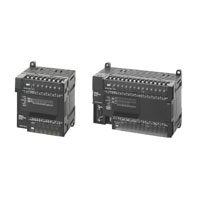Special Functions Module & Communications Processors
SIMATIC S7-300
Point-to-Point link via communications processors (CPs) is an extremely powerful and low cost alternative to bus-systems. The advantage of point-to-point links over bus systems is especially pronounced when only a few (RS485) devices are to be connected to the SIMATIC S7.
The CPs can also economically connect third party systems to the SIMATIC S7. Thanks to the great flexibility of the CPs different physical transmission media, speeds or even customized transmission protocols can be implemented.
The configuring data are stored in a system data block stored in the CPU. When modules are replaced, the new module is therefore immediately ready for use.
Technical data
Point-to-Point Link |
| Application |
Low-cost entry version |
Powerful computer conncetion, Loadable protocols |
| Transmision rate |
Low (19200 bit/s) |
High (76800 bit/s) |
| Loadable protocols |
|
MODBUS master (6ES7340-1AA.),
MODBUS slave (6ES7340-1AB.),
Data highway (6ES7340-1AE.) |
| Module |
CP 340 |
CP 341 |
| Order No. Group: 6ES7 |
340-1. |
341-1. |
| Physical transmission media |
| RS 232C (V.24) |
CP 340-1A |
CP 341-1A |
| 20 mA (TTY) |
CP 340-1B |
CP 341-1B |
| RS 422/485 (X.27) |
CP 340-1C |
CP 341-1C |
| Integrated transmission protocols |
| ACII |
■ |
■ |
| Printer driver |
■ |
■ |
| 3964 (R) |
■ |
■ |
| RK 512 |
|
■ |
Technology
Function m,odulesc are intelligent modules that independently
execute the technoogical tasks and thus reduce the load on the
CPU. They are used when a high level of accuracy and dyna,ic
response is required.
| Function modules |
| Tchnological function |
Channels / Axes |
Modue |
| Counting, measuring, proportioning position detection (incremental) |
1 |
FM350-1 |
| Counting, measuring, proportining |
8 |
FM 350-2 3) |
| Cam controls |
1 |
FM 352 |
| High-speed dinary logic operations |
1 |
FM 352- |
| PID control (continuous) |
4 |
FM 355C |
| PID control (step/impulse) |
4 |
FM 355S |
| Temperature control (continuous) |
4 |
FM 355-2C |
| Temperature control (step/impulse) |
4 |
FM 355-2S |
| Positioning (rapid travers/creep feed) |
2 |
FM 351 |
| Position detection (SSI) |
3 |
FSM 338 |
| Positioning (with stepper drives) |
1 |
FM 353 |
| Positioning (with servo drives) |
1 |
FM 354 |
| Positioning, path control, interpolation, synchronization |
4 |
FM 357-2 |
| Isochronous connection of drives via PROFIBUS |
4 |
IM 174 |
Communication
Commnuication processors are used for connecting S7-300
to the different dus systems / communication networks as well
for point-to-point link.
| Communcations processors |
| Bus system /communication network |
Module |
| AS-Interface (mater) 2) |
CP 343-2
CP343-2 P |
| PROFIBUS DP 2) |
CP 342-5 |
|
CP342-5 FO
(for fiber-optic conductors) |
| PROFIBUS FMS 2) |
CP 343-5 |
| PROFINET / Industrial Ethernet 2) |
CP 343-1 Lean |
|
CP 343-1 |
|
CP 343-1 Advanced
(with IT functionnality) |
| Point-to-point link |
CP 340 4)
CP 341 4) |
| WAN |
TIM 3V-IE
TIM 3V-IE Advanced |


